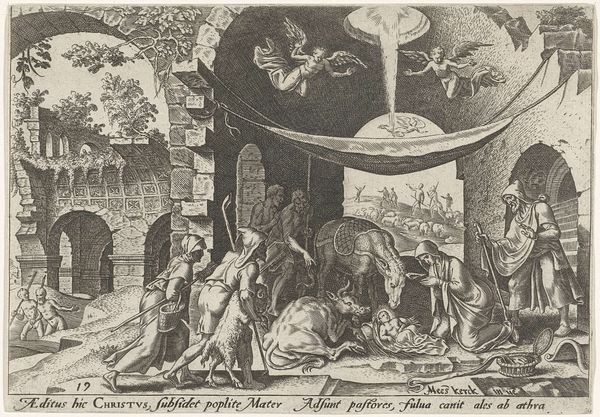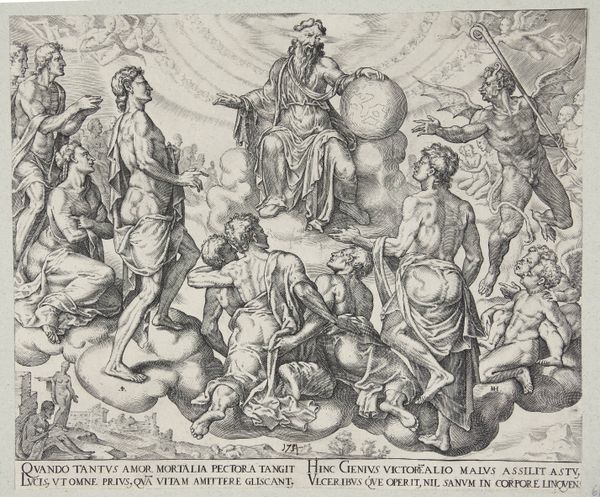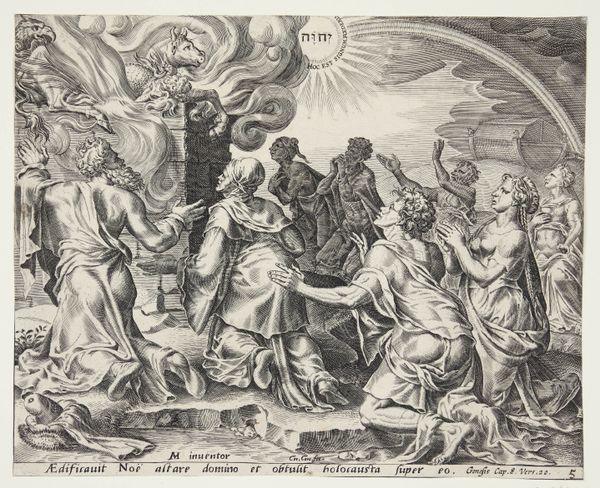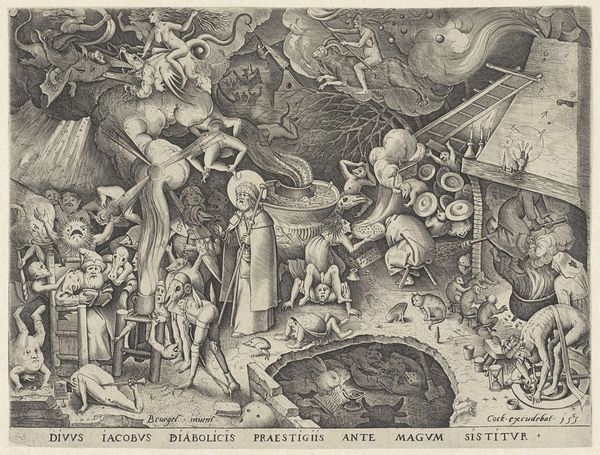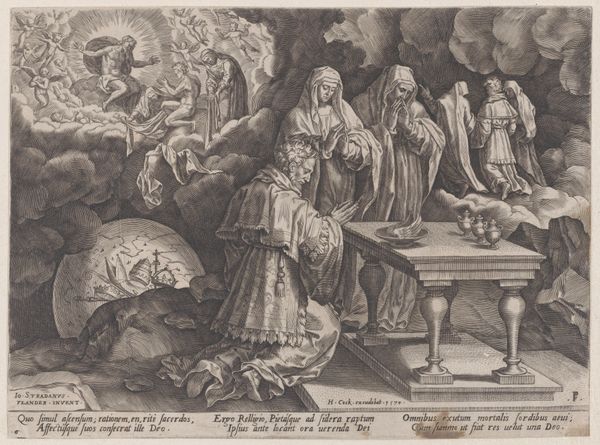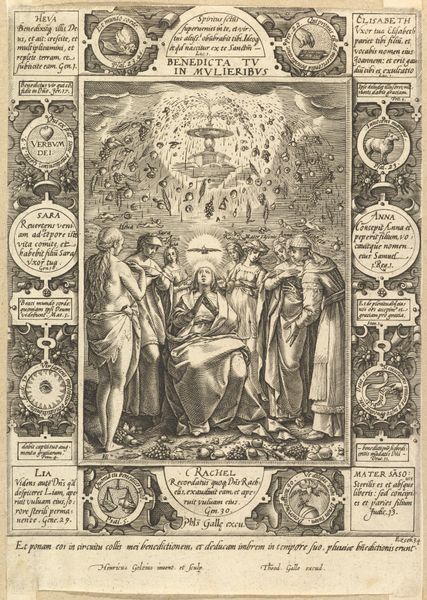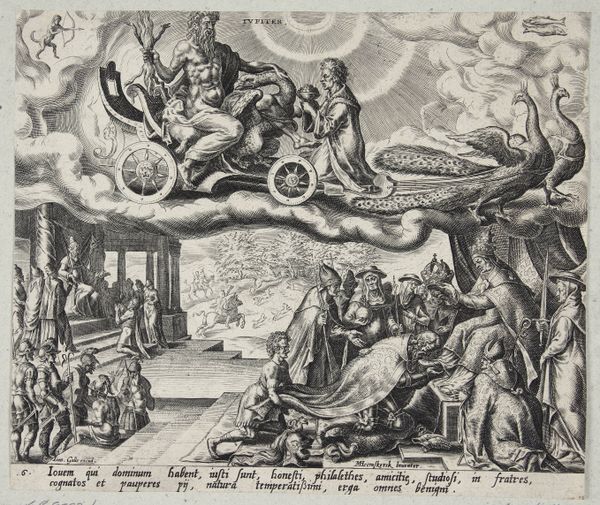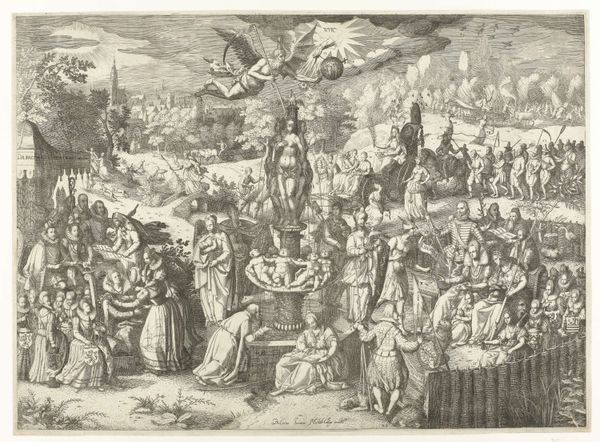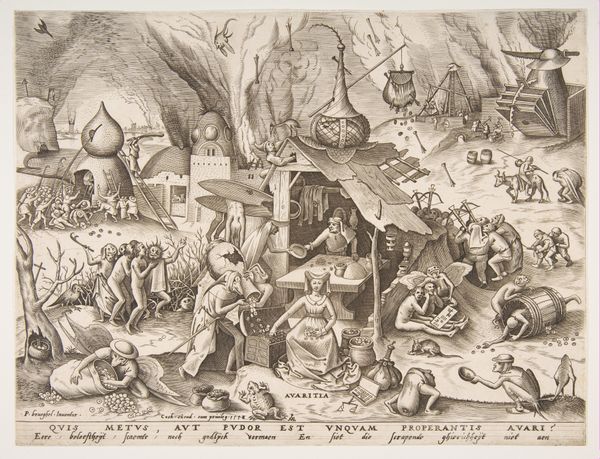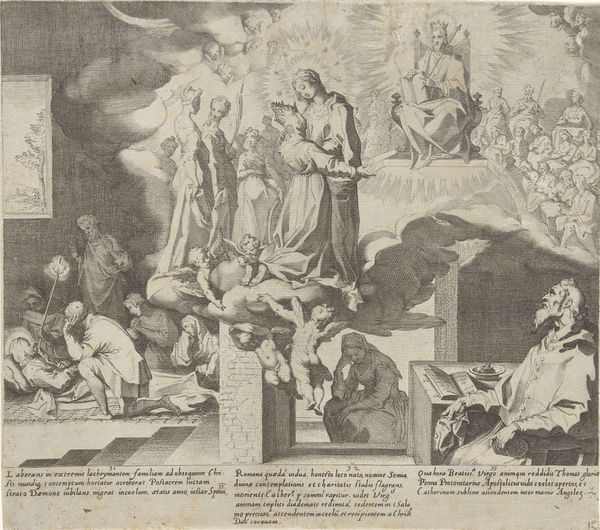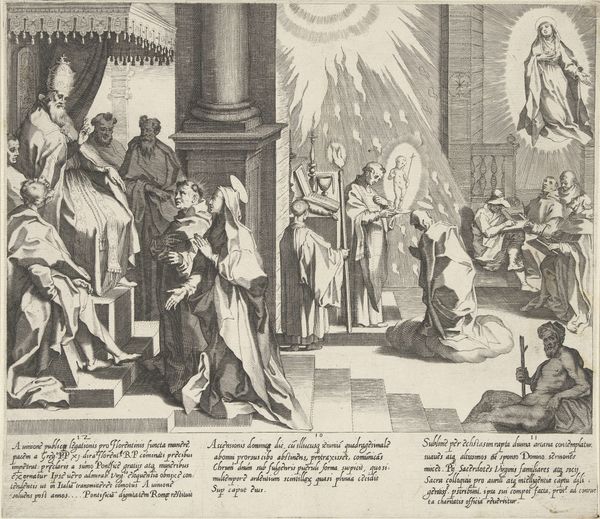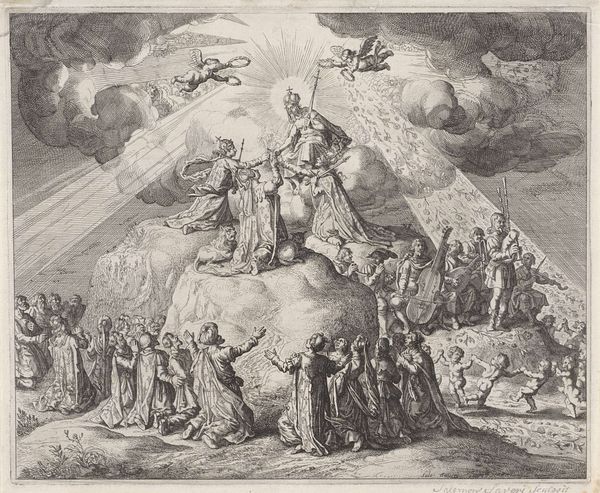
Dimensions: Sheet: 9 5/8 x 12 5/16 in. (24.4 x 31.2 cm) Plate: 8 3/4 x 11 7/16 in. (22.3 x 29.1 cm)
Copyright: Public Domain
Curator: Philips Galle’s "Temperance," or "Temperantia," dating from about 1559 to 1564. This engraving on paper is part of "The Virtues" series, a fascinating exploration of moral principles rendered with remarkable detail. What's your first take? Editor: Crowded! That's the first thing that leaps out. It feels like a fever dream rendered in lines – an intricate clockwork mechanism about to spring apart, but held together by the central figure. The eye dances all over, not knowing where to settle. It's like he’s stuffed so much stuff that it might be like too much to take in for one painting, I think. Curator: Precisely! The density is very typical of Northern Mannerism. Look closer. The central female figure, Temperance, is almost radiating a strange calm amidst the chaos. She holds the reins, so to speak, representing moderation, even as madness unfolds around her. The balance in design is a powerful message about staying stable. Editor: You’re right. I get this vibe like a ship in a storm—everything's tilting and about to go sideways, but she’s totally centered, and calm, like there isn’t trouble going around in circles. So all these little groups acting out vices all over...what's that about? Is it the kind of like the world turning to rubbish? Curator: Consider each vignette as an antithesis to temperance. Excess in music and art, financial impropriety. Galle shows how people become obsessed, how societies, if unchecked, can tip toward ruin through intemperance. It's a didactic piece, a very powerful warning couched in allegory, cultural commentary of then times. Editor: So, less about preachy "be good" and more like, "Look, society's a house of cards if we're not careful?" With maybe a little smirk there. Almost like he doesn’t fully think these virtues he is talking about matter. Like everyone in their heads can be the most sane but when together are always wrong. Like, maybe it’s too much effort and drama if they tried so much, and nothing happened at all. Curator: A subversive reading, certainly. But even subversion reinforces the central ideal. Galle compels us to confront these extremes, thereby keeping the conversation about balance relevant, even today, a few centuries later. It gives meaning when the observer considers. Editor: Absolutely. It’s the kind of picture you could spend days in, picking apart all its little stories. Temperance, at least, will keep me coming back, if only for that calm center in the tempest.
Comments
No comments
Be the first to comment and join the conversation on the ultimate creative platform.
